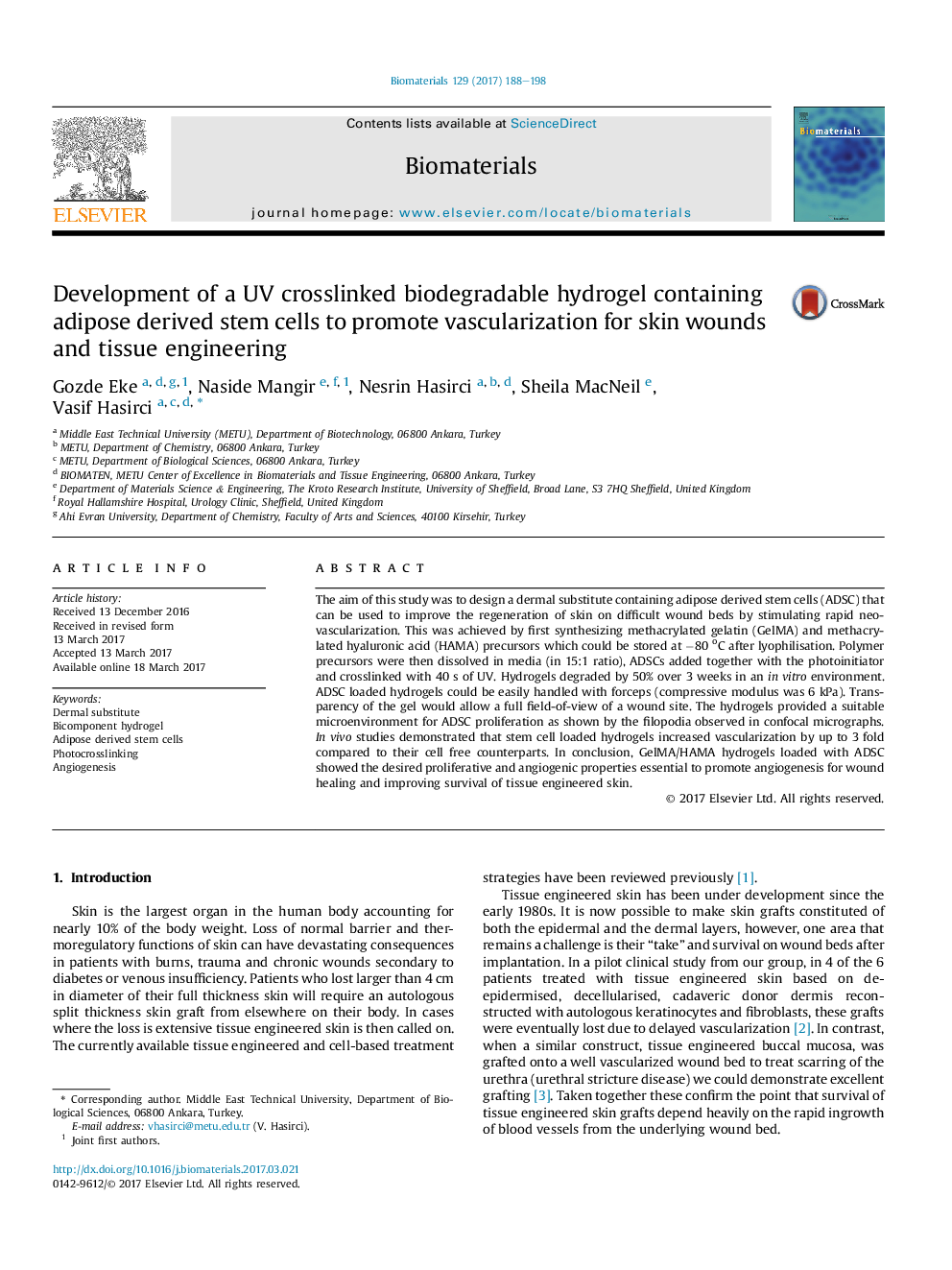| Article ID | Journal | Published Year | Pages | File Type |
|---|---|---|---|---|
| 6450735 | Biomaterials | 2017 | 11 Pages |
â¢A BCN hydrogel was synthesized from methacrylated gelatin and hyaluronic acid.â¢It is designed to be easily assembled in the clinic with good handling properties.â¢More than 90% of the stem cells remained alive when loaded into the hydrogels.â¢Initial in vivo tissue responses together with the angiogenic response were evaluated.â¢Mesenchymal stem cell loaded hydrogels can serve as a pro-angiogenic dermal substitute.
The aim of this study was to design a dermal substitute containing adipose derived stem cells (ADSC) that can be used to improve the regeneration of skin on difficult wound beds by stimulating rapid neovascularization. This was achieved by first synthesizing methacrylated gelatin (GelMA) and methacrylated hyaluronic acid (HAMA) precursors which could be stored at â80 oC after lyophilisation. Polymer precursors were then dissolved in media (in 15:1 ratio), ADSCs added together with the photoinitiator and crosslinked with 40 s of UV. Hydrogels degraded by 50% over 3 weeks in an in vitro environment. ADSC loaded hydrogels could be easily handled with forceps (compressive modulus was 6 kPa). Transparency of the gel would allow a full field-of-view of a wound site. The hydrogels provided a suitable microenvironment for ADSC proliferation as shown by the filopodia observed in confocal micrographs. In vivo studies demonstrated that stem cell loaded hydrogels increased vascularization by up to 3 fold compared to their cell free counterparts. In conclusion, GelMA/HAMA hydrogels loaded with ADSC showed the desired proliferative and angiogenic properties essential to promote angiogenesis for wound healing and improving survival of tissue engineered skin.
Graphical abstractDownload high-res image (477KB)Download full-size image
